This article includes a list of general references, but it lacks sufficient corresponding inline citations .(July 2016) |




This article includes a list of general references, but it lacks sufficient corresponding inline citations .(July 2016) |




The village of Rodoretto is a small village in the Region of Piedmont, Italy which still exists today [1] . At some point in its history, Gaspare Paoletti di Rodoretto was made Count, presumably due to his military proficiency. The Count of Rodoretto lineage begins with the aforementioned Gaspare Paoletti Conte di Rodoretto dell Perero Presidente Reggente de la Gran Camelleria del Regno di Serdegna [4] sometime before 1800s. Afterwards it continues to Giacinto Paoletti di Rodoretto Maggiore d'amanta. Then Giuseppe Paoletti. Next is Jacinto (Written as Giacinto in the family tree) Paoletti who was the father of Maria Luisa Paoletti who was the last Countess of Rodoretto.
At some point in the lineage, most likely around the 1860s, the family moved out of the Kingdom of Italy into the Mexican empire, where Maria Luisa was born on June 21, 1874. [2] [3]
Jacinto Paoletti decided to leave every possession and title to Maria Luisa Paoletti due to the life-style choices of his son, Jose Paoletti who pursued a career in opera and arts while Maria Luisa studied languages and piano. However, after Maria Luisa Paoletti married Adolfo Dollero, they travelled to Europe where Adolfo cheated on the Countess with his secretary and took all of Maria Luisa's possessions and titles and left her stranded in France. After several years of maintaining herself with piano lessons, her family managed to help her return to Mexico. Several years later and after spending everything and falling ill, Dollero returned to Maria Luisa. Both died in Mexico.

Giacinto Francesco Maria Scelsi was an Italian composer who also wrote surrealist poetry in French.

Franz Xaver Winterhalter was a German painter and lithographer, known for his flattering portraits of royalty and upper-class society in the mid-19th century. His name has become associated with fashionable court portraiture. Among his best known works are Empress Eugénie Surrounded by her Ladies in Waiting (1855) and the portraits he made of Empress Elisabeth of Austria (1865).
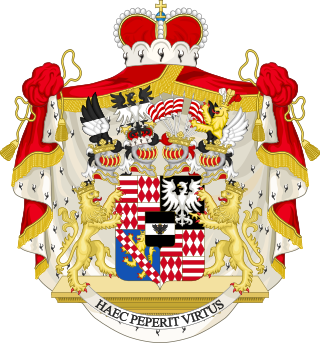
The House of Colloredo-Mansfeld is an originally Italian noble family of which a branch came to Austria in the late 16th century. There they were raised to barons in 1588, imperial counts in 1727 and imperial princes in 1763. They obtained Opočno Castle in the Kingdom of Bohemia in 1634 and acquired numerous further estates in Bohemia and Austria. In 1945 they were expropriated and expelled from the Czechoslovak Republic, but returned after 1990 and had parts of their former estates restituted.

Villa del Poggio Imperiale is a predominantly neoclassical former grand ducal villa in Arcetri, just to the south of Florence in Tuscany, Central Italy. Beginning as a villa of the Baroncelli of Florence, it was seized by the Medici, became the home of a homicidal and unfaithful husband, and a lavish retreat for a Grand Duchess with imperial pretensions. Later given to Napoleon's sister, it was reclaimed by the hereditary rulers of Tuscany before being finally converted to a prestigious girls' school. During its long history, it has often been at the centre of Italy's turbulent history, and has been rebuilt and redesigned many times.

Louis I was the first of the two kings of Etruria. Louis was the son of Ferdinand, Duke of Parma, and Maria Amalia of Austria. He was born in 1773, when his great-grandfather, King Louis XV of France, was still alive.

Maria Luisa of Spain was a Spanish infanta, daughter of King Charles IV and his wife, Maria Luisa of Parma. In 1795, she married her first cousin Louis, Hereditary Prince of Parma. She spent the first years of her married life at the Spanish court where their first child, Charles, was born.
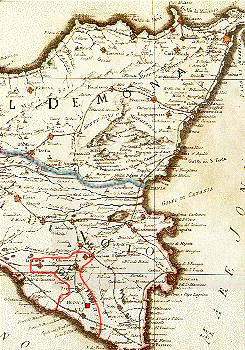
The County of Modica was a feudal territory within the Kingdom of Sicily from 1296 to 1812. Its capital was Modica, on the southern tip of the island, although the cities of Ragusa and Scicli housed some government offices for a period. Today it is perpetuated only as a title held by the head of the House of Alba, Carlos Fitz-James Stuart, 19th Duke of Alba.
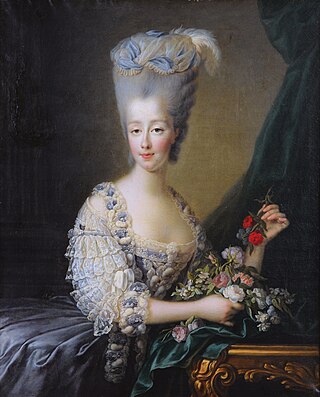
Maria Theresa of Savoy was a French princess by marriage to Charles Philippe, Count of Artois; he being the grandson of Louis XV of France, and younger brother of the future Louis XVI of France. Nineteen years after Maria Theresa’s death, her spouse assumed the throne of France as King Charles X. Her son, Prince Louis Antoine, married Marie Antoinette’s daughter Marie-Thérèse Charlotte, they being the King and Queen of France for approximately 20 minutes on 2 August 1830.
Ranieri of Tuscany, a member of the Bourbon del Monte Santa Maria family, was the Margrave of Tuscany from around 1014 until his death. He is also believed to have held the titles of Duke of Spoleto and Camerino.

Luisa of Naples and Sicily was Grand Duchess of Tuscany as the wife of Ferdinand III, Grand Duke of Tuscany. She was born a princess of Naples and Sicily as a daughter born to Ferdinand I of the Two Sicilies and Maria Carolina of Austria.
Adolfo Dollero, son of Tancredi Dollero and Ernestina Cane, was an Italian Mexican historian who travelled and lived in many countries in Latin America. He married Maria Luisa Paoletti, countess of Rodoretto, from the region of Piemonte in Italy. He authored various books among them:

Princess Maria Luisa of Bourbon-Two Sicilies was the youngest daughter of King Ferdinand II of the Two Sicilies and his wife Archduchess Maria Theresa of Austria. She was known for her piety and for her charity to the poor.

Princess Maria Carolina Giuseppina Ferdinanda of Bourbon-Two Sicilies, full Italian name: Maria Carolina Giuseppina Ferdinanda di Borbone, Principessa delle Due Sicilie was a member of the House of Bourbon-Two Sicilies and a Princess of Bourbon-Two Sicilies by birth and Countess Zamoyska through her marriage to Polish nobleman Count Andrzej Przemysław Zamoyski.
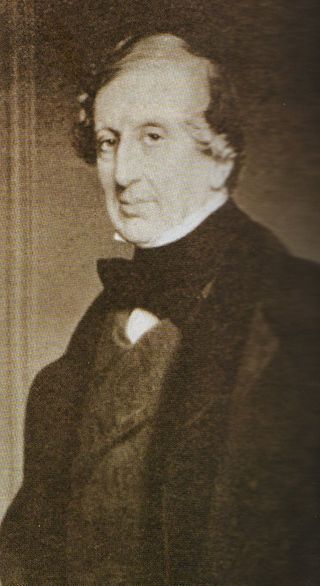
Carlo Emanuele dal Pozzo, 5th Prince of La Cisterna was a nobleman and politician in the Kingdom of Sardinia. His other titles were 5th Principe di Belriguardo, 6th Marchese di Voghera, 6th Conte di Reano, 8th Conte di Ponderano, 8th Conte di Bonvicino, 6th Conte di Neive, 6th Conte di Perno, among others.

The House of Khevenhüller is the name of an old and important Carinthian noble family, documented there since 1356, with its ancestral seat at Landskron Castle. In the 16th century, the family split into the two branches of Khevenhüller-Frankenburg, Imperial Counts from 1593, and Khevenhüller-Hochosterwitz, raised to Imperial Counts in 1725 and, as Khevenhüller-Metsch, to princely rank (Fürsten) in 1763. The family belongs to high nobility.

Virginia Oldoini Rapallini, Countess of Castiglione, better known as La Castiglione, was an Italian aristocrat who achieved notoriety as a mistress of Emperor Napoleon III of France. She was also a significant figure in the early history of photography.

Count of Chinchón is a title of Spanish nobility. It was initially created on 9 May 1520 by King Charles V, Holy Roman Emperor, who granted the title to Fernando de Cabrera y Bobadilla.
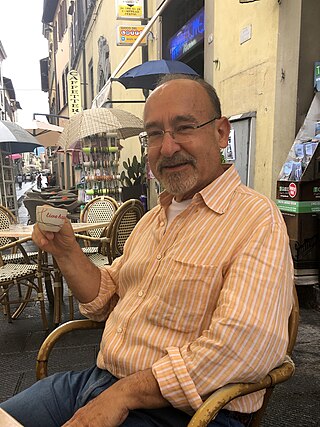
Luci mie traditrici is an opera in two acts by Salvatore Sciarrino, who also wrote the libretto. It was first performed under the German title Die tödliche Blume on 19 May 1998 in the Schlosstheater Schwetzingen at the Schwetzingen Festival. The title is taken from a line in the opera by the countess. The couple's name 'Malaspina' is of an Italian noble family, but it translates as 'evil thorn'. A performance lasts about 1 1/4 hours.

Maria Goretti is a 2003 Italian television movie directed by Giulio Base and starring Martina Pinto in the title role. The film is based on real life events of Catholic virgin martyr and saint Maria Goretti.
Emilio María Juan Crisostomo Drake y de la Cerda, 1st Marquess of Cañada Honda, was a Spanish aristocrat and politician, member of the Congress of Deputies as well as senator for the province of Puerto Rico, a Spanish colony at the time. Closely linked to the Liberal Party, Drake became senator in 1891 and deputy in 1898, being an active member of the Senate's and the Congress' committees regarding public works and infrastructure in Puerto Rico and Peninsular Spain. He was awarded the Grand Cross of the Order of Isabella the Catholic and made Maestrante of Seville.